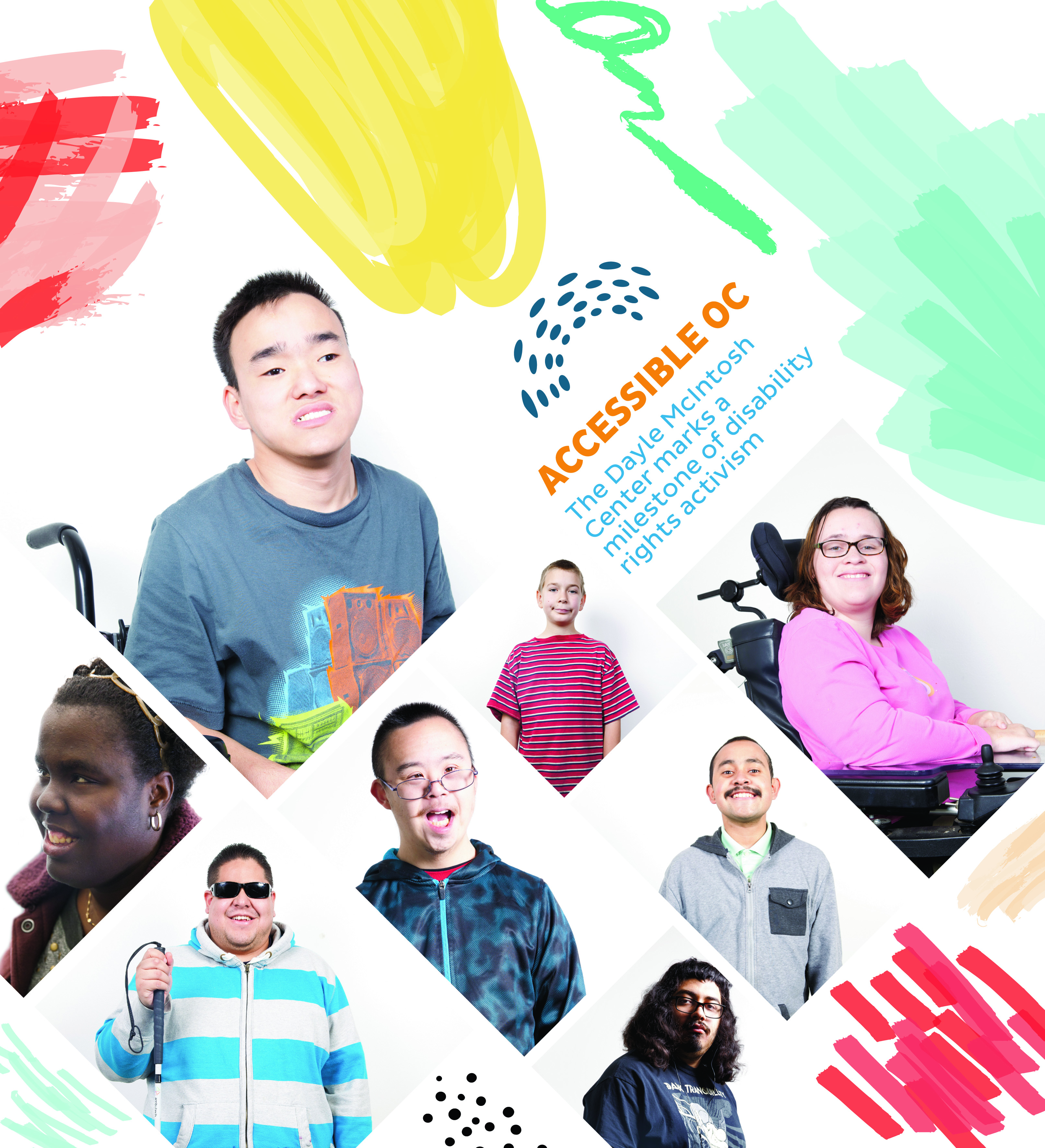
On a clear Saturday morning, youth with disabilities both visible and invisible file into a spacious activities room at the Anaheim Accessibility Center. The converted train station in the city’s historic Colony District is new to playing host for the Dayle McIntosh Center’s weekend youth programs, which used to be held at the cramped quarters of the nonprofit’s Anaheim office. A trio of coordinators help form a circle near the door to begin the day.
Wearing a plum shirt that says “Resist” in American Sign Language (ASL), Brittany Zazueta guides a warmup discussion about future goals such as moving into an apartment or getting a job. As the Center’s program manager for independent living and deaf services, she then has the youth split into two groups to get some hands-on training in the kitchen. While one group slaps together turkey sandwiches with all the fixings, the other walks to a nearby stove, near which they tear open boxes of chocolate, strawberry and Funfetti cake mix. A young man with developmental disabilities grabs the first of three eggs. “Whack it on the side of the bowl,” Zazueta instructs. He taps the shell a few times before it cracks open and releases its slithery yolk.
While the cakes bake, Zazueta tells her group about the special birthday they’re celebrating. “He is known as the father of independent living,” she says, giving a clue.
A hand shoots ups. “Ed Roberts!” a young girl answers correctly.
Zazueta delves into how the late activist from Berkeley contracted polio at 14 and couldn’t breathe on his own without the use of a 600-pound iron lung. Roberts still completed high school in three years over the phone and enrolled at UC Berkeley, where he started the Rolling Quads, a disability-rights student group.
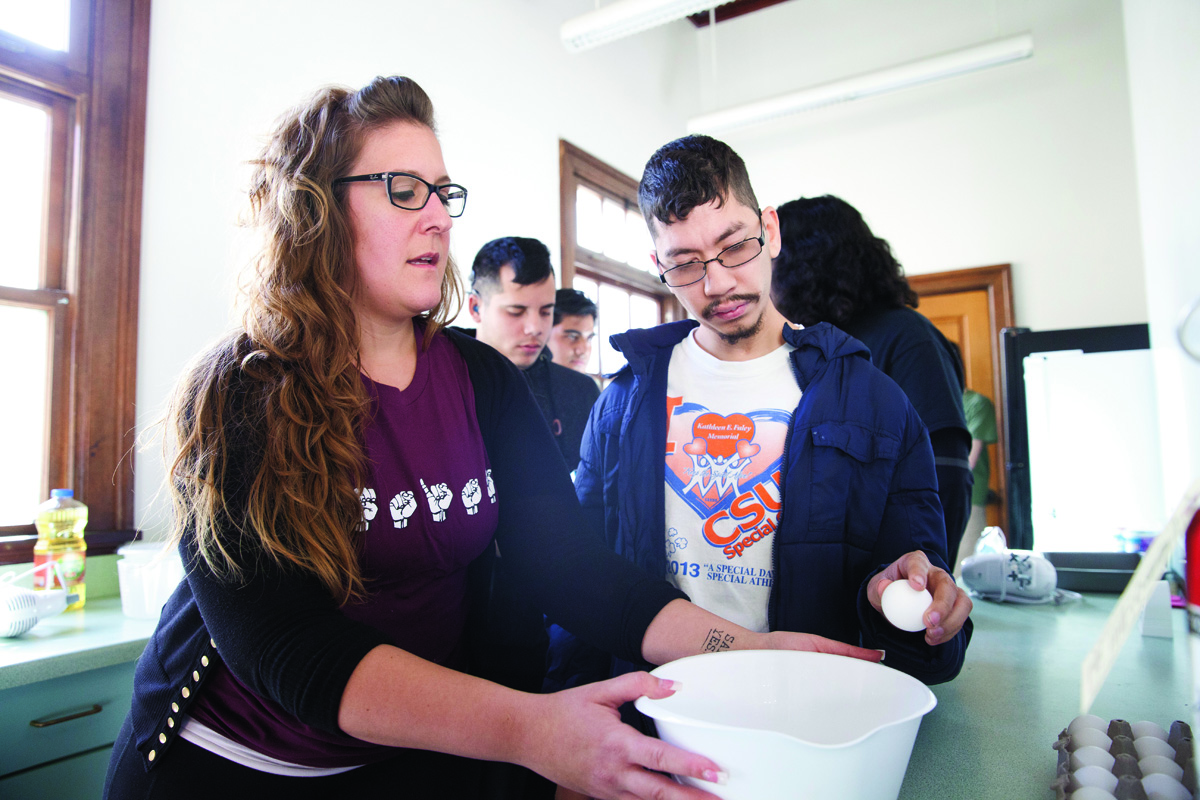
Photo by John Gilhooley
The cakes come out of the oven and are sliced into squares while the lesson continues. “That was the very beginning of the Independent Living Movement,” Zazueta says. “Did you guys know that the Dayle McIntosh Center is an independent living center?”
“Yes!” the youth group responds in unison, but the history lesson is cut short as parents arrive for pickups.
The peer-based philosophy that guided the day is the same that opened the Dayle McIntosh Center 40 years ago. The idea of a center by and for people with all types of disabilities inspired Orange County’s most intrepid, if unheralded, activists who took heed from Roberts. The Center’s namesake activist became an early, outspoken advocate for OC’s disabled community. “McIntosh was totally paralyzed, with only the use of a few fingers,” recalls Brenda Premo, who helped to found the Center. “She was very severely disabled, but she was very smart.”
A quadriplegic, McIntosh never got to be the Center’s first bookkeeper as planned. She tragically died right before its opening. The Center carried on in her name, following the example set in 1972 by the Berkeley Center for Independent Living. Activists such as Premo, McIntosh, Bob Cummings and Paula Margeson epitomized the “Nothing about us without us” slogan of the disability-rights movement, making OC more accessible curb cut by curb cut.
As with every nonprofit, the Center has faced financial struggles and came close to shutting down just a few years ago. But its legacy faces an immediate challenge from Washington, D.C. “Ideally, we work ourselves right out of a job because society would be so inclusive and accessible that there wouldn’t need to be an agency to go to,” says Margeson, a ninth-generation blind woman who began as a volunteer in 1978 and now serves as the Center’s executive director. “We make these giant steps with the Americans With Disabilities Act (ADA), and then here comes the ADA Education and Reform Act that just threatens everything.”
* * * * *
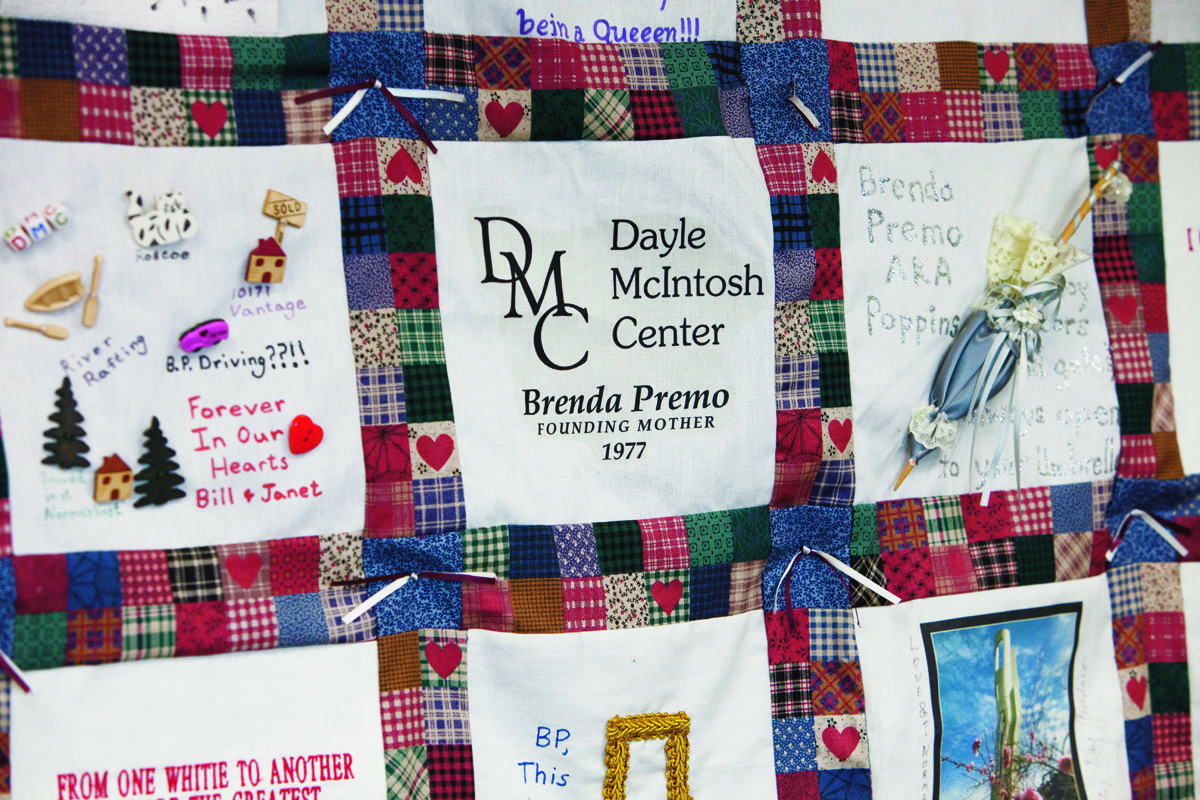
A quilt from the Center hangs in Premo’s office at Western University of Health Sciences in Pomona, where she serves as director of the Harris Family Center for Disability and Health Policy as well as assistant vice president of government issues. One of its many patches reads, “Brenda Premo, Founding Mother, 1977.” Margeson came up with the birthday-gift idea. Though Premo has long since moved on, she fondly recalls the Center as her child.
It all started with a survey. Premo met Greg Winterbottom, a wheelchair user and early champion of greater accessibility in OC, through her job with the Orange County Department of Education. He helped to spearhead the first “needs assessment” survey of residents with disabilities, a task carried out under the Orange County Human Relations Commission in 1976. “We came across people like Premo really quickly,” says Rusty Kennedy, the commission’s former executive director.
Through the survey, Premo met Cummings and McIntosh. “It was the first step to a whole lot of stuff that has happened since,” Premo says. “It started with the simplest stuff but got into mental health for the deaf and relay services so deaf people could make calls.”
The Orange County Committee on the Handicapped came into being after the survey “revealed no program or organization in the county to aid handicapped people in meeting specific needs,” according to the Orange County Register. Among the committee’s goals was to create an independent living center such as the Center for Independent Living in Berkeley and West Side Center for Independent Living in San Francisco, both of which Premo visited as research.
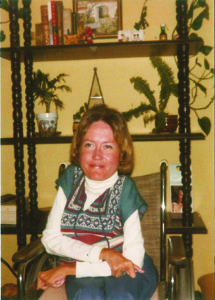
Courtesy Kyle McIntosh
They readied to bring their dream into reality when McIntosh passed away on Aug. 5, 1977, at age 36. “To say Dayle was a community activist would be an understatement,” wrote Peter Lipschultz, a member of the OC chapter of the California Association of the Physically Handicapped (CAPH), in a newsletter. McIntosh served as president of the local CAPH chapter at the time of her death. “She had an unwavering dedication to which her many activities dramatized.”
The work of establishing OC’s first independent living center carried on in her memory. Premo didn’t have articles of incorporation yet when she received a $52,000 startup grant from the County Board of Supervisors in October 1977. She then found a humble office in Garden Grove with two long halls and three barren rooms on each side—more than enough to accommodate a trio of staffers.
A young founding director at 26, Premo hired Cummings and Darlene Garrison to start on the Center’s mission of housing, advocacy and accessibility—the latter of which began with modifying the office’s own restrooms. When the Center finally opened that year, it carried McIntosh’s name. “Dayle represented everything we were talking about,” Premo says. But now, the advocates had the chance to put ideas into action. “Our first client was someone who had a ringing condition, and we found her an audiologist who could help her with it. Oh, it was exciting because none of us knew anything!”
* * * * *
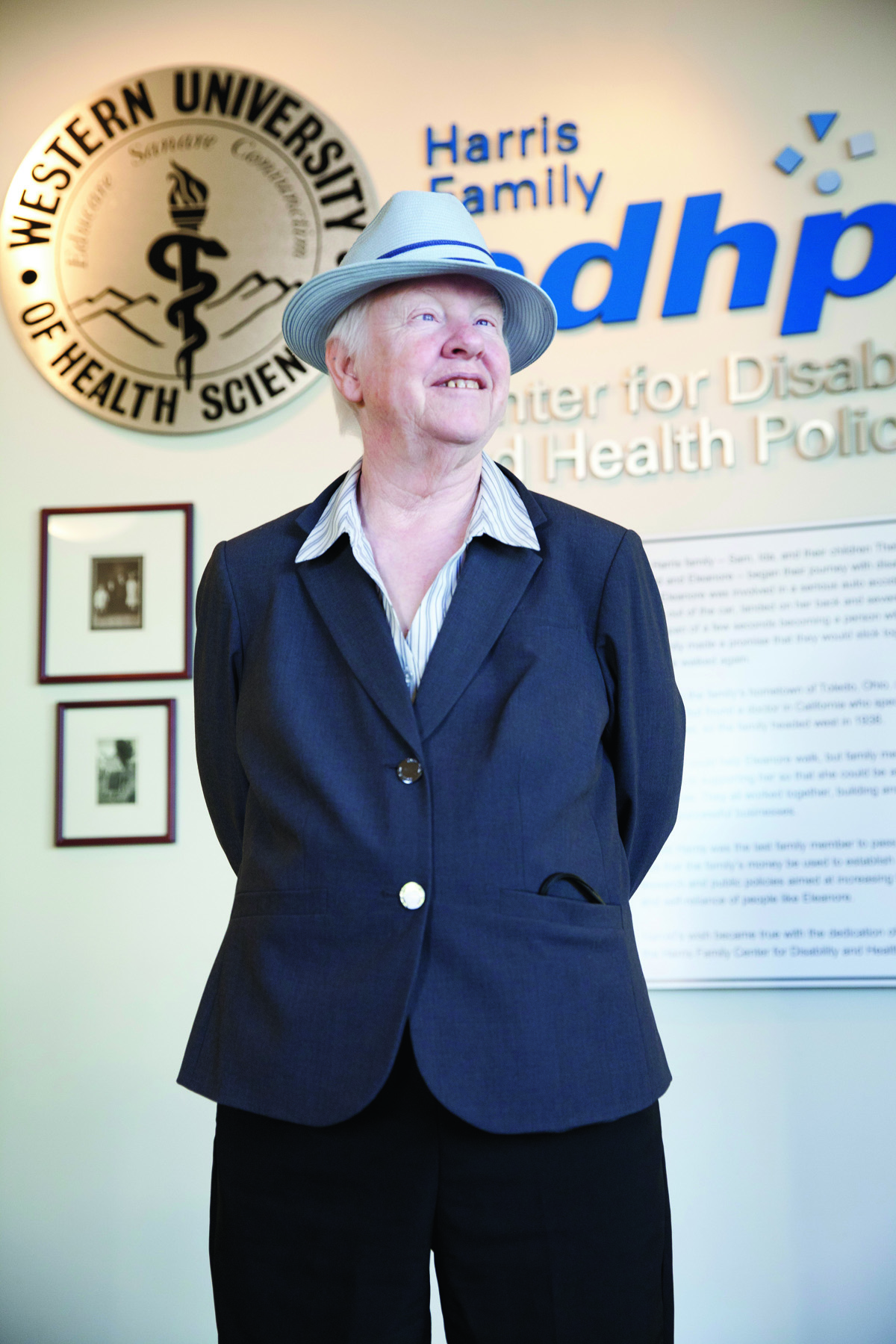
Photo by John Gilhooley
By the time United Nations Secretary General Kurt Waldheim proclaimed 1981 as the “International Year of Disabled Persons,” the Dayle McIntosh Center had already established itself as a presence in making OC more accessible and inclusive for its residents with disabilities. Helpful to the cause, the nonprofit’s funding base got a boost early on. In 1976, Governor Jerry Brown appointed Roberts the first director with a disability of the California Department of Rehabilitation, an agency that in the past deemed him too severely disabled to work. The historic move allowed Roberts to support the independent living centers he inspired across the state in a big way, including OC.
“He was the director who funded us,” Premo says. “Seven months after we opened—and I thought this was a fortune—I got $165,000 from the state. The next year, I got $200,000.” Once solidified, the Center’s staff played a key role in how OC heeded the UN’s call to make ’81 a banner year for disability rights. The OC Human Relations Commission formed the Action Committee Concerned with Equal Services (ACCESS) task force in response to the proclamation, with Premo serving as its chairwoman. Margeson chaired the housing subcommittee, an important role that later led to her greatest accomplishments in the field. Aside from housing, ACCESS studied issues of civil rights, education, employment, mobility, health, media, arts and recreation where it concerned people with disabilities.
Kennedy remembers those days well. Two days shy of retirement, his signature bow tie is unfastened as he retreats to a metal filling cabinet in his office. “We went and did a real study, one that showed huge deficits,” he says, dropping the ACCESS folders on his desk. “We looked at curbs that stopped people from basic social services, issues of access to health care, and challenges in the work force.”
But the lengthiest report belonged to Margeson’s housing subcommittee. It outlined a number of objectives aimed at addressing the “severe shortage of accessible and affordable housing.”
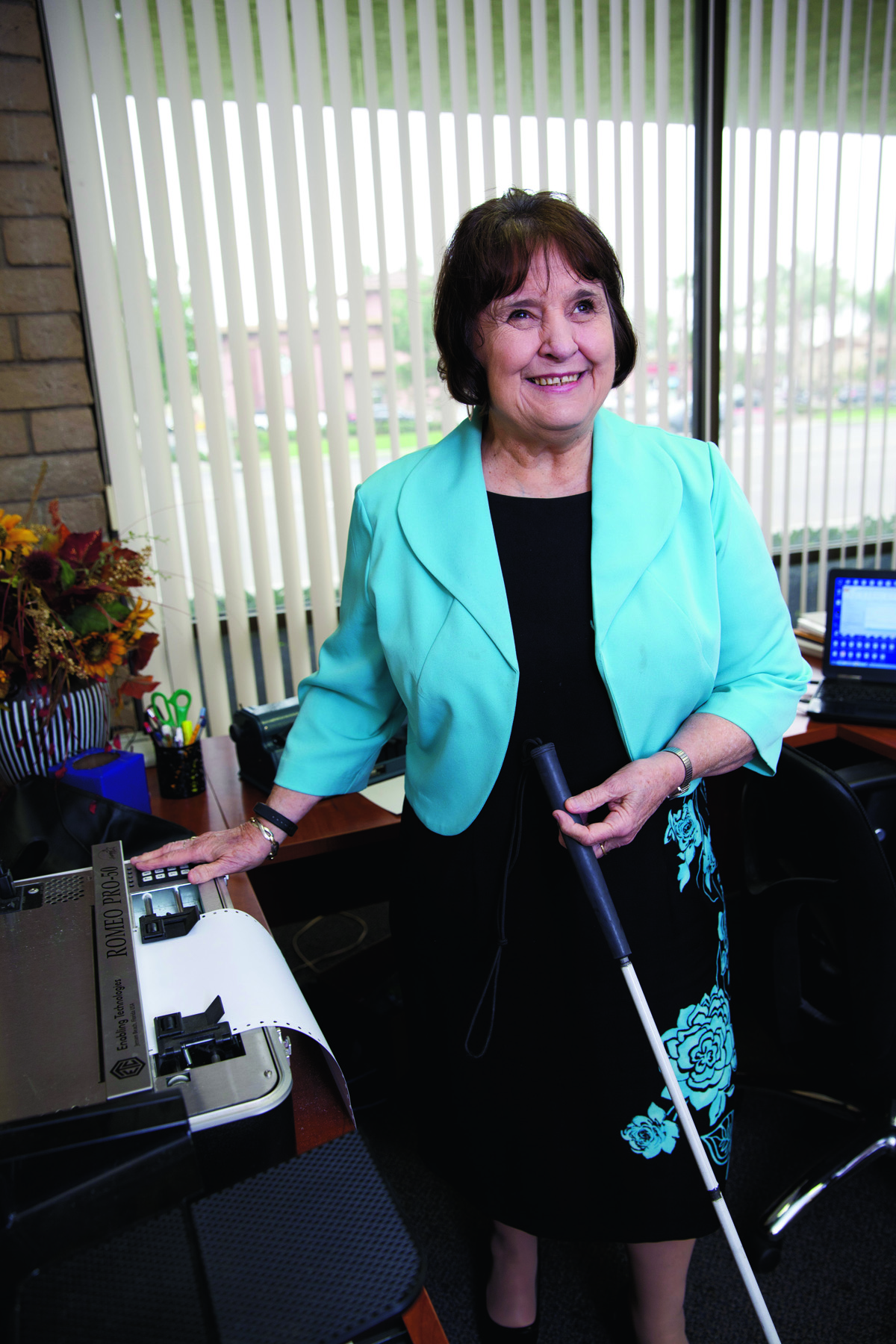
Photo by John Gilhooley
Unlike the other subcommittees, Margeson’s task force continued after the UN-designated year. In October 1986, Margeson helped to make history when the Center sponsored Anaheim’s Carbon Creek Shores, a $2.7 million affordable-housing project for the disabled. But the achievement didn’t come easy. Margeson considered Westminster first, only to encounter fierce pushback from hundreds of NIMBYs at a City Council meeting. “Somebody tried to trip her,” Premo recalls. “I caught her and looked at the guy and said, ‘That was certainly manly, wasn’t it?’”
Margeson looked to Fountain Valley for her next proposal, but when it stalled, the Irvine Co. stepped in and sold an odd, triangular-shaped plot near UC Irvine. Mariposa Villa Co-op Apartments, a 40-unit housing development, opened in 1991 and continues as a resident-run cooperative of people with physical disabilities. By that time, Margeson moved to Dallas and Premo left the Center to follow Roberts’ lead by becoming director of the California Department of Rehabilitation. Cummings took the reins afterward, leading the Center into a new era, one in which the ADA finally enshrined disability rights as civil rights in 1990.
“When I grew up, if you were disabled, you were less than,” Premo says. “The ADA made it illegal to treat us as second-class citizens.”
* * * * *
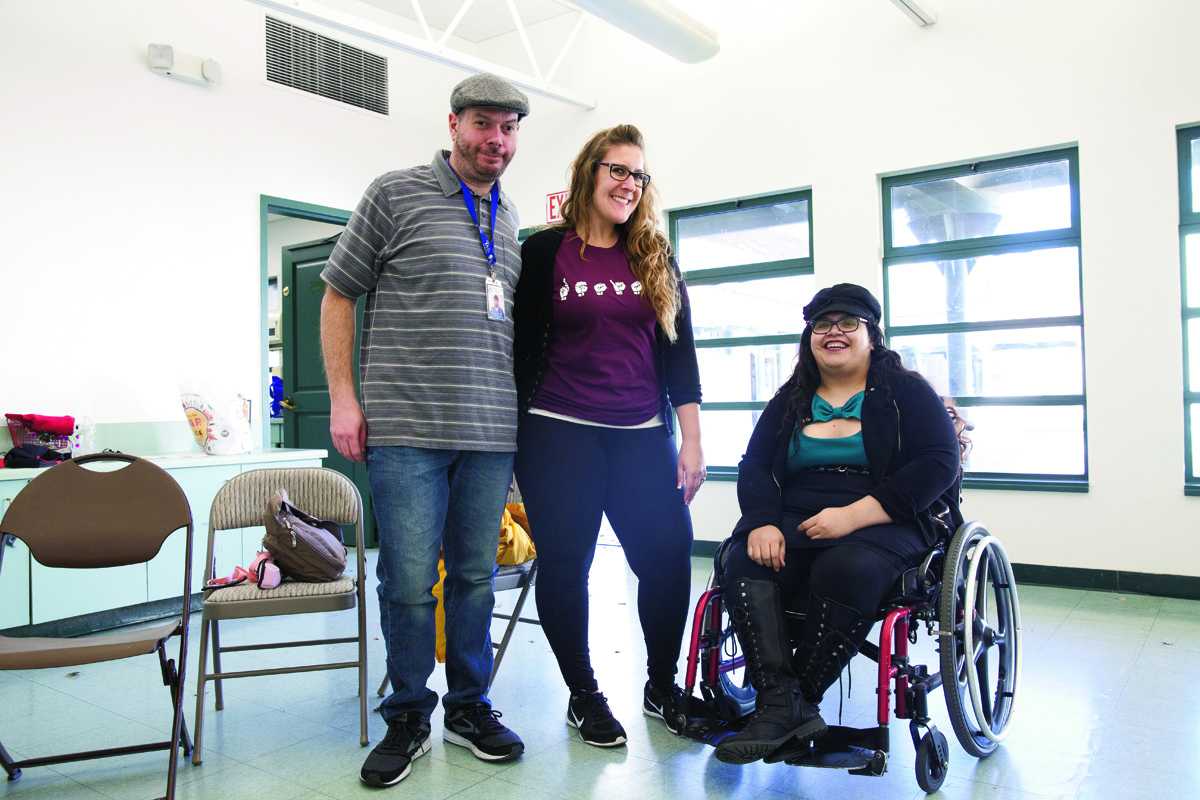
Photo by John Gilhooley
A bright sun hovered over the White House lawn on the summer morning of July 26, 1990. Disability-rights advocates gathered around President George H.W. Bush for a signing ceremony marking the passage of the Americans With Disabilities Act. Premo wore a hat to protect her sensitive skin. She sat four rows behind the president, almost close enough to see his face clearly. But the Center’s then-executive director was no passive observer. Premo had spent the past two years helping to shape the ADA when President Ronald Reagan appointed her to the National Council on Disability in 1988. “Brenda never is one that inserts a word every once in a while,” Margeson says. “She was not just a contributor, but a key player.”
Margeson had her say in the landmark legislation, too. When 60 advocates traveled to D.C. to review its first draft, she counted herself among them. And who better? For more than a decade, Margeson and Premo worked through the Center to advance the rights of people with disabilities with just Section 504 of the 1973 Rehabilitation Act to back them up. With the ADA, new far-reaching protections against discrimination on the basis of disability were introduced in hiring, transportation and public accessibility.
But after the ADA, the Center carried on without Premo and Margeson. When Governor Pete Wilson appointed Premo to head the state’s Department of Rehabilitation in 1991, Cummings took over as executive director until his passing in 2000. He succumbed to complications from diabetes, a condition that rendered him blind throughout most of his life. “He was the rational administrator,” Premo says. “He worked until about three months before he died.”
The Center carried on into the new century without its co-founders, struggling along the way. But nothing brought everything closer to the brink than the aftermath of the Great Recession. Under new leadership, the Center’s focus shifted toward employment programs with as many as 40 job developers at one point. With the recession, the employment programs got hit especially hard. But the executive director who oversaw the shift remained committed to them, even if it threatened to leave the Center in financial shambles.
By 2014, a shakeup of the board and leadership became necessary to save the Center. That year, Premo returned on an interim basis and got immediate funding that proved a life-saver. “I made sure things got fixed that got broken,” Premo says. “The board called me to do it. If there’s a problem, which there was where one of the directors almost put it out of business, that’s the only time I got involved because I wasn’t going to let it die.” She split her time between Western University and the Center for seven months, foregoing a salary from the latter. Margeson began writing grants from afar, just as she had for years after she originally left.
As part of the board shakeup, the Center tapped into its lineage when Kyle McIntosh, Dayle’s nephew, joined on that pivotal year. “I’ve got a heavy finance background,” he explains. “I’ve always heard stories over the years about how persistent Dayle was to fight for the rights of people with disabilities. I’m certainly proud to represent Dayle and my grandparents, as well; they were the ones who helped bring her ideas to fruition.”
Even with new board members and emergency funds secured, the Center had to go through hiring a permanent executive director when Margeson applied. She discussed her concerns about the Center’s future with Premo over the phone when she slyly coaxed her into it. The board hired Margeson for the job, much to Premo’s delight. “When I came on as director, people didn’t understand our philosophy or what our mandates were,” Margeson says. “We had to re-define ourselves. I had to do some work to re-establish credibility in the community about Dayle McIntosh as an independent living center.”
In 2014, the staff had dwindled down to just 16 people, but now the Center boasts 33 employees. They reunited around their common purpose and reignited morale. “We still have a ways to go to get ourselves where we want to be, but I definitely think we’re headed in the right direction,” Kyle adds. “A lot of that has to do with Paula’s leadership.”
* * * * *
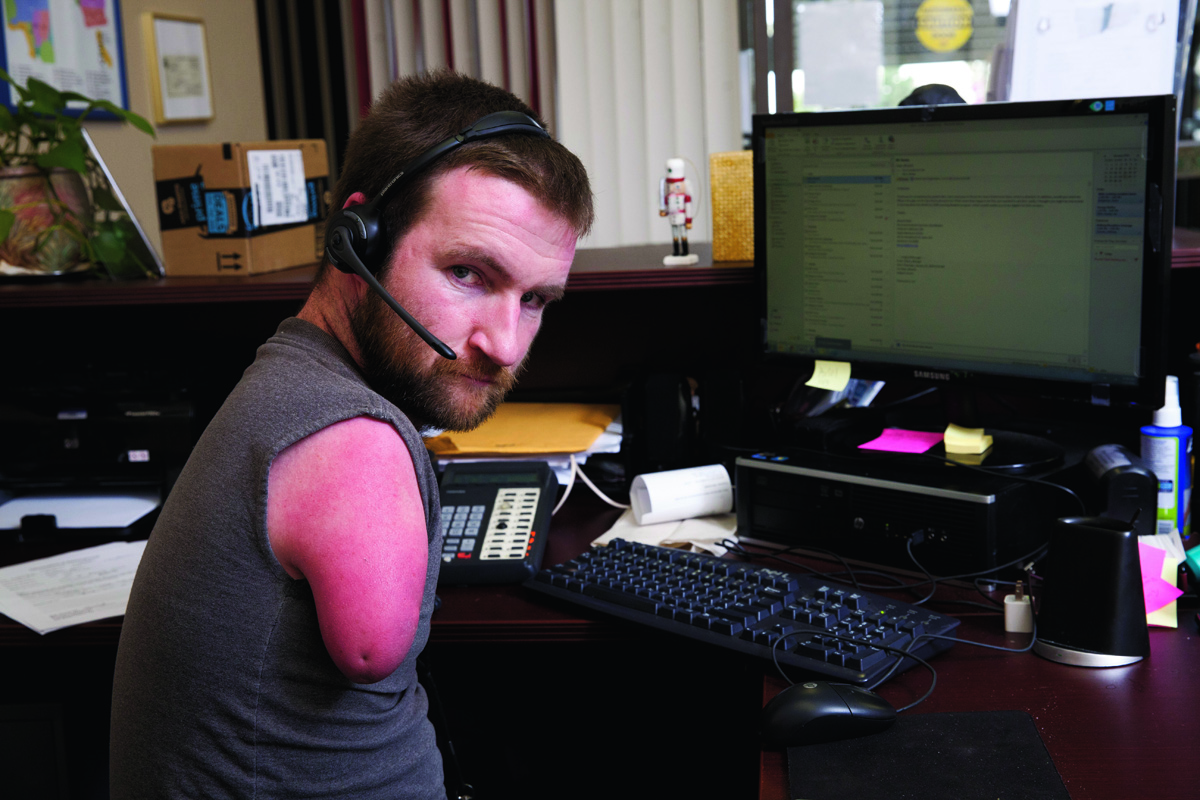
Photo by John Gilhooley
Through its automatic doors, portraits of the Dayle McIntosh Center’s “Independent Living Wall of Fame” hang near the reception desk. Premo, McIntosh and Richard Devylder are the trio of honorees since the Center began its inductions in 2016. Devylder, a former executive director of the Center, was born without limbs; he passed away about two years ago. Behind the front desk, Mike Olson, who shares Devylder’s condition, speaks highly of him before attending to a blind client. “Hold my shoulder,” Olson says, dipping it down before escorting the man through the doors.
Decades after its founding, the Center offers 16 different programs and services for people with disabilities. An informal reunion was held in honor of the Center’s 40th anniversary on Nov. 3 at the Phoenix Club in Anaheim. The fundraising dinner included a live raffle, trips down memory lane and special recognition of the Center’s founders.
But the commemoration comes at an anxious time for disability rights in the United States. An effort to gut the ADA under the guise of stopping abusive lawsuits is on the march. On Feb. 15, the House of Representatives passed the ADA Education and Reform act. “This federal legislation is going to say that if a person with a disability encounters an obstacle to access, they have to notify the owner of the business that they violated the ADA and quote the provisions in the law that they violated, which the average person with a disability isn’t going to know,” Margeson says. “The person, after being served with that notification, has 180 days to correct the problem with no fear of any kind of fines or repercussions. What it says to the business community is ‘Don’t worry about being accessible.’”
Along with more than 100 other organizations, the Dayle McIntosh Center signed a letter strongly opposing the ADA Education and Reform Act in May 2017. The Disability Rights Education & Defense Fund addressed its ire at California’s congressional members who co-sponsored the legislation at the time, including Lou Correa (D-Santa Ana) and Darrell Issa (R-Vista). Mimi Walters (R-Irvine) added her support in November.
“[House Resolution] 620 is an unnecessary and poorly considered measure that would fundamentally harm our nation’s progress toward an accessible and integrated society,” the letter reads. “The bill further telegraphs to individuals with disabilities, including Californians with disabilities, that their inclusion is not important.” The Disability Rights Education and Defense Fund urged congressional members to rethink their support and withdraw co-sponsorship. The effort came in vain. Correa joined the county’s four Republican representatives in voting for the legislation.
“The ADA is fair,” Margeson says. “If you’ve got a mom-and-pop organization and it’s going to totally derail that business to make modifications that are costly, they can ask for a hardship waiver.” She acknowledges the existence of “drive-by” lawsuits that are more about payouts than accessibility, but argues the proposed legislation is being pushed by retail and tourist industries and won’t do much about an overblown problem.
Having reached a milestone, the Dayle McIntosh Center is going to be as important as ever in the year to come. Back on solid ground, it’s ready to fight like hell to ensure that rollbacks on disability rights don’t happen. “We’re a living, breathing example of how a person with a disability can become successful, control their own lives and support themselves,” Margeson says. “We’ve had six directors, and four of them have been blind. We have great vision!”
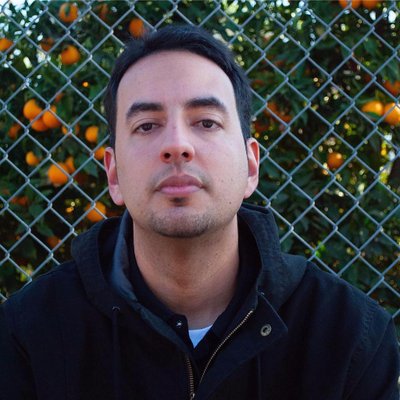
Gabriel San Román is from Anacrime. He’s a journalist, subversive historian and the tallest Mexican in OC. He also once stood falsely accused of writing articles on Turkish politics in exchange for free food from DönerG’s!


I recently tried CBD gummies from this website https://www.cornbreadhemp.com/products/cbd-sleep-gummies as a replacement for the first prematurely and was pleasantly surprised past the results. Initially skeptical, I create that it significantly helped with my dread and doze issues without any unconcealed side effects. The oil was unoppressive to utter, with clear dosage instructions. It had a merciful, lusty grain that was not unpleasant. Within a week, I noticed a patent improvement in my total well-being, ardour more blas‚ and rested. I know the unstudied approach to wellness CBD offers and procedure to pursue using it.